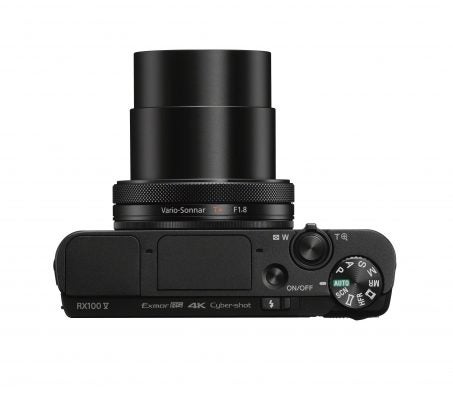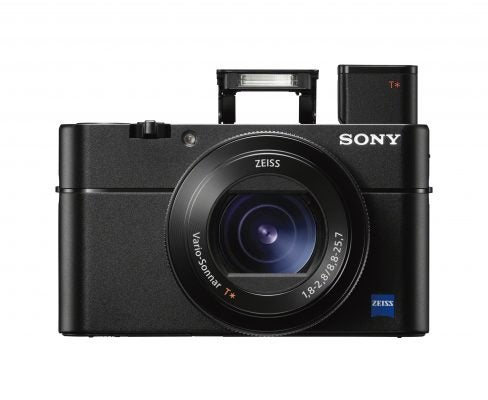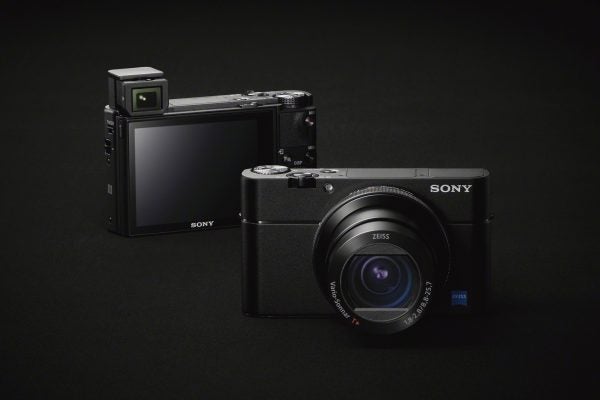A deeper look at the differences between the new and old premium compact camera from Sony.
Sony announced the RX100 V just over a year after the RX100 IV. It keeps many of the same features, but it also boasts some fantastic new ones. Here’s a closer look at what’s new and what’s stayed the same.
Sony RX100 V vs Sony RX100 IV: sensor

Sony describes the sensor inside the new RX100 V as “newly developed”, but it’s the same stacked CMOS design with 20.1 megapixels with the RX100 IV. They’re also both the one-inch size made popular with the introduction of the first RX100 camera.
Sony RX100 V vs Sony RX100 IV: lens

It’s a classic case of if it ain’t broke don’t fix it for the RX100 V’s lens. Just like the previous version, there’s a 24-70mm equivalent lens (2.9x optical zoom), with maximum apertures of f/1.8-f/2.8.
Sony RX100 V vs Sony RX100 IV: video
Both the RX100 V and the RX100 IV offer 4K video recording. One particularly special feature of both is super slow motion video recording at up to 1000fps. Although both cameras can do it, the RX100 V is now capable of shooting slow motion for twice as long as its predecessor, giving you up to a five minute long output – useful for examining your golf strokes, or the minute movements of you pet spaniel.
Sony RX100 V vs Sony RX100 IV: autofocus
It’s here where one of the big new improvements has been made to the RX100 V. Sony is claiming that the autofocus system inside the RX100 V is the fastest in the world for a compact camera. It’s said to be able to lock onto focus in just 0.05 seconds. It’s also got 315 phase-detection autofocus points which give you 65% frame coverage – which should make it better for focus tracking too.
Sony RX100 V vs Sony RX100 IV: frame rate
Another key improvement here is the ability to shoot at an impressive 24fps – the older camera topped out at 16fps. While this camera isn’t exactly aimed at sports photographers, it could have some very useful applications for capturing fast changing action. What’s more, the buffer has been improved so you can shoot for longer – up to 150 shots (both raw and JPEG) in fact, so you’re less likely to miss the crucial moment.
Sony RX100 V vs Sony RX100 IV: processor
The RX100 V, like its predecessor, has a Bionz X processor, but this time it is joined by a newly developed front-end LSI. In basic terms, this means that not only has the buffer been expanded for when continuous shooting, but it’s also promising better high ISO performance.
Sony RX100 V vs Sony RX100 IV: EVF and screen

Sony has stuck with the same pairing of EVF and screen for the RX100 V as it had on the RX100 IV. The electronic viewfinder has 2359k-dots and has an impressive design which allows it to retract into the body of the camera when not in use. Sony still hasn’t found a way to improve it so that it’s a quick one-step process, but it’s never-the-less still very useful. The screen is 180 degree tiltable, which means that it can face forward for taking selfies – but it’s still not touch sensitive unlike the newly announced A6500.
Sony RX100 V vs Sony RX100 IV: battery life

Unfortunately, with all that power, it’s not surprising to see that battery life has taken a bit of a hit. Whereas the old camera could muster roughly 280 shots per charge – a not hugely impressive figure in itself – the new model is only capable of 220. You’re going to need a second battery if you want this to last all day in all likelihood.
Sony RX100 V vs Sony RX100 IV: price

These cameras definitely occupy the more expensive end of the market, with the new model due to set you back just shy of a cool £1000. By contrast, you can pick up the older model for a still pretty hefty £799. If you’re willing to go back few models you can get some great bargains.
Read more:





